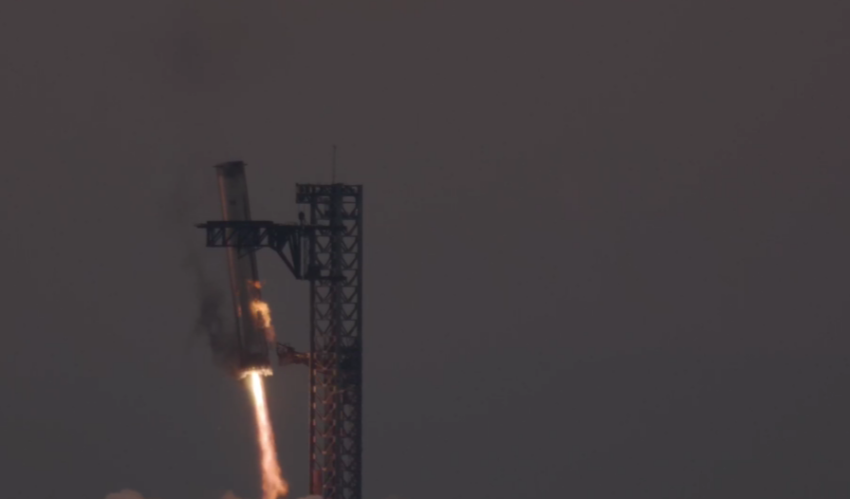SpaceX has once again made headlines with a groundbreaking achievement in space exploration. On October 13, 2024, the aerospace company successfully launched its formidable Starship rocket from the Starbase in Boca Chica, Texas. This time, however, the mission was marked by an unprecedented accomplishment — the capture of the returning booster by mechanical arms at the launch pad. This bold maneuver represents a significant leap forward in rocket reusability and engineering innovation.
- SpaceX successfully launched its Starship rocket on October 13, 2024, achieving a groundbreaking milestone by capturing the returning booster with mechanical arms, a feat never accomplished before.
- The Starship rocket, standing at 400 feet, lifted off from Boca Chica, Texas, marking its most ambitious test flight to date, after prior attempts led to booster destruction.
- The booster was caught by “chopsticks,” metal arms at the launch pad, seven minutes after liftoff, highlighting significant advances in rocket reusability and engineering.
- SpaceX’s success boosts its long-term vision of using Starship for crewed missions to the moon and Mars, with NASA already commissioning two Starships for lunar missions.
The Starship rocket, towering at nearly 400 feet (121 meters), lifted off at sunrise, marking its most ambitious test flight to date. The rocket’s launch was closely watched by space enthusiasts and experts alike, as previous attempts had resulted in the destruction of the boosters either shortly after takeoff or upon impact with the sea. This latest mission followed the relatively successful June flight, which managed to complete its journey without exploding, though not without issues.
The highlight of this mission was the retrieval of the first-stage booster. The booster returned to the launch pad just seven minutes after liftoff, where it was caught by gigantic metal arms, affectionately nicknamed “chopsticks.” This remarkable feat of engineering drew enthusiastic reactions from SpaceX personnel. Dan Huot, present near the launch site, expressed his disbelief and excitement, while Kate Tice from SpaceX headquarters hailed the event as a landmark moment in engineering history.
The decision to attempt the booster landing was made in real time by the flight director, contingent on the stability and condition of both the booster and the launch tower. The entire operation was meticulously planned to ensure a successful catch, avoiding a repeat of previous missions where boosters ended up in the Gulf of Mexico. The upper portion of the Starship, once separated from the booster, continued its journey around the globe, aiming for a controlled splashdown in the Indian Ocean. The spacecraft had undergone several upgrades since its last flight, including software improvements and enhancements to its heat shield.
SpaceX’s successful recovery of the booster marks a significant milestone in its pursuit of rocket reusability. For nearly a decade, the company has been retrieving the first-stage boosters of its smaller Falcon 9 rockets, which land on floating platforms or concrete slabs miles from their launch sites. However, catching a booster at its point of origin presents a new level of complexity and potential cost savings.
CEO Elon Musk has long envisioned the Starship as the future of space travel, with plans to use it for crewed missions to the moon and Mars. NASA has already commissioned two Starships for lunar missions scheduled for later this decade. The success of this latest mission not only strengthens SpaceX’s position as a leader in space exploration but also brings humanity a step closer to interplanetary travel.

